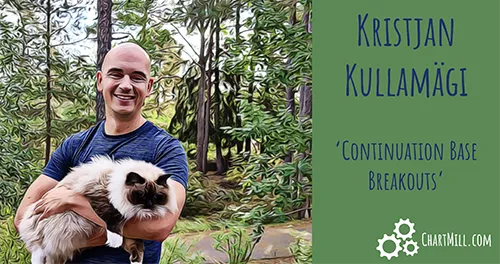Mastering the Qullamaggie Episodic Pivot Setup: A Flexible Stock Screening Approach
By Kristoff De Turck - reviewed by Aldwin Keppens
Last update: Nov 22, 2024
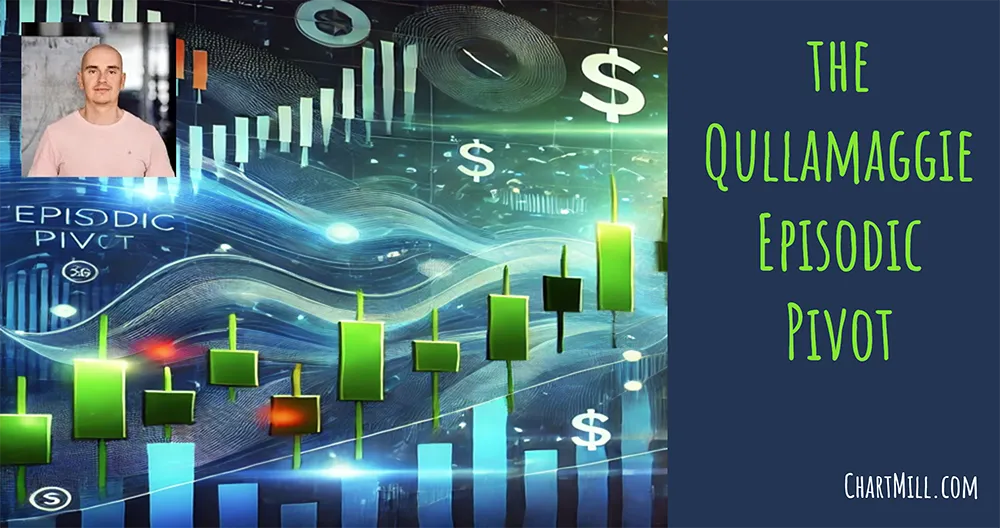
The qullamaggie episodic pivot setup is a highly effective strategy for identifying stocks that showed significant upward momentum following a major catalyst. At ChartMill, we've developed a flexible screening tool to help traders uncover these opportunities with ease.
This post will walk you through the essential criteria for spotting episodic pivots and how you can refine the list with optional filters to tailor it to your trading preferences.
If you're new to Kristjan Kullamägi's trading setups, check out our detailed post on his Continuation Breakout Setup here. It’s a great complementary strategy that pairs well with the episodic pivot approach.
What Is an Episodic Pivot?
An episodic pivot occurs when a stock experiences a powerful move driven by a significant event, such as earnings surprises, product launches, or major news.
For the purposes of this screen, we focus specifically on earnings-related events, as these often provide the most reliable catalysts for large price increases, high volume, and potential trend continuation in subsequent sessions.
The Core Criteria for Spotting Episodic Pivots
We recommend starting with some basic filters to identify high-quality candidates. Here's what to look for:
Price: Above $3/€3.
- Ensures stocks are not micro-penny stocks, maintaining quality and liquidity.
Market Cap: At least small.
- Targets companies with enough institutional interest while still allowing for explosive moves.
Average Volume (50 trading days): At least 300,000 shares daily.
- Ensures sufficient liquidity to enter and exit positions effectively.
Gap Up: At least 2% in the last trading session.
- Indicates a potential catalyst and strong opening momentum.
Earnings Catalyst: Last week.
- Ensure the stock has earnings news published during the last week to confirm a fresh catalyst.
% Change (Last Trading Day): At least 5%.
- Confirms significant price movement, validating the event's impact.
Volume (Last Trading Day): At least 100% higher than the previous trading day.
- Suggests heightened interest and institutional participation.
Direct link to the basic trading idea
This is a result of this basic screening filter at the time of writing this article:
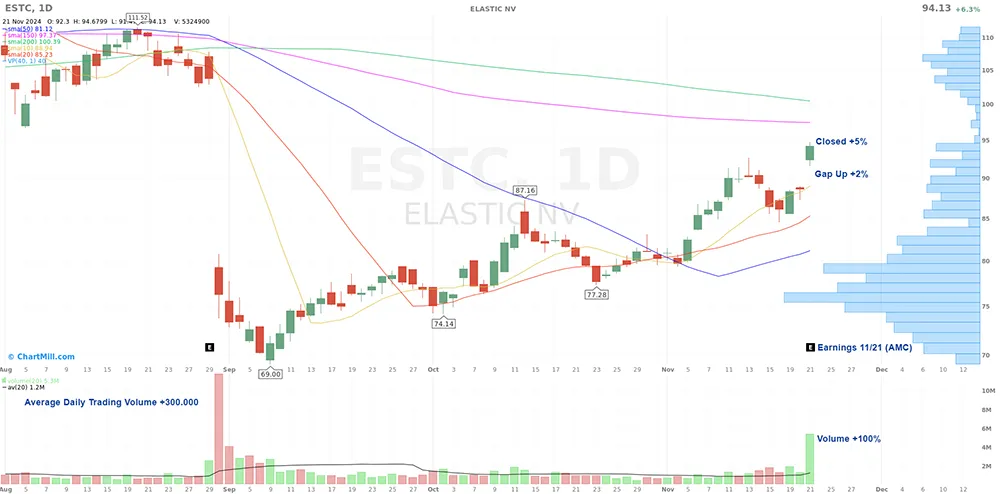
Optional Filters to Refine Your Search
When the basic filter generates too many candidates, you can apply these optional filters for more precision:
Float Size: Under 50M shares.
- Smaller floats are more prone to explosive price action due to limited supply.
Average $/€ Volume: At least $10,000,000/€10,000,000 daily.
- Ensures stocks have enough dollar-volume liquidity for larger trades.
Short Interest: Above 10%.
- High short interest can lead to a short squeeze, amplifying the price movement.
Institutional Ownership: At least 5%-10%.
- Adds credibility and stability to the stock's movement.
Sector/Industry Focus: Limit to high-performing sectors.
- Stocks in trending sectors often have better follow-through potential.
ADR (20%): Above 2.
- Ensures sufficient daily volatility for active trading.
How to Use This Filter in ChartMill
- Start with the basic episodic pivot filter in the ChartMill screener.
- Evaluate the number and quality of candidates generated.
- Apply optional filters as needed to refine the list further.
- Use the full screen stock charts in ChartMill to analyze individual setups, focusing on technical patterns and follow-through potential.
Intraday and Swing Trading Potential of the Episodic Pivot
One of the most appealing aspects of the episodic pivot setup is its flexibility, making it suitable for both intraday and swing traders.
Why It Works for Intraday Traders
The episodic pivot setup thrives on fresh catalysts that drive significant opening momentum.
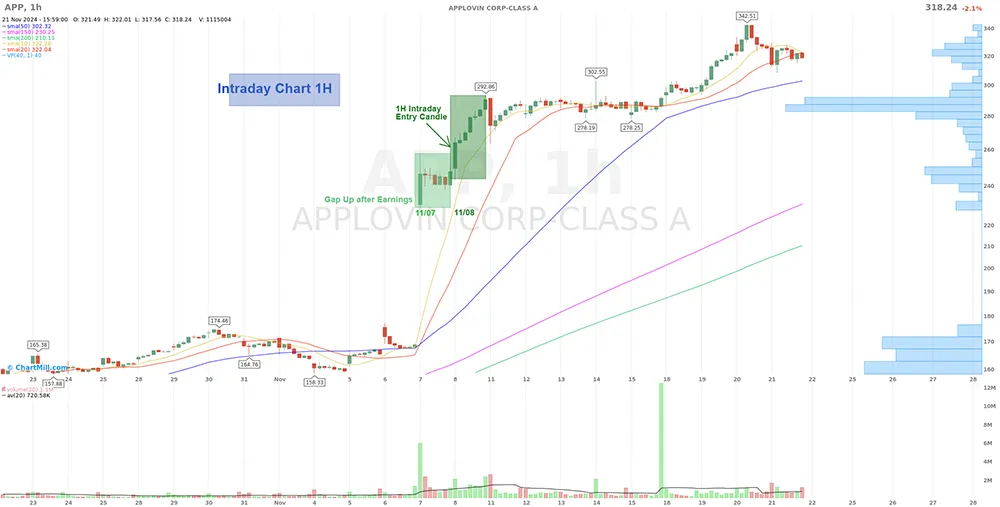
Intraday traders can take advantage of:
- Strong Continuation Moves: The immediate price action after the initial rise often provides excellent opportunities for quick profits.
- High Volume Liquidity: Elevated trading activity ensures smooth entry and exit, even during volatile periods.
- Clear Risk Levels: Intraday charts can help traders define risk using opening ranges, gaps, or pivot levels.
Swing Trading the Episodic Pivot
If the initial move is successful and the stock closes once again near its highs with continued strong volume, it often signals the potential for further upside in the coming days.
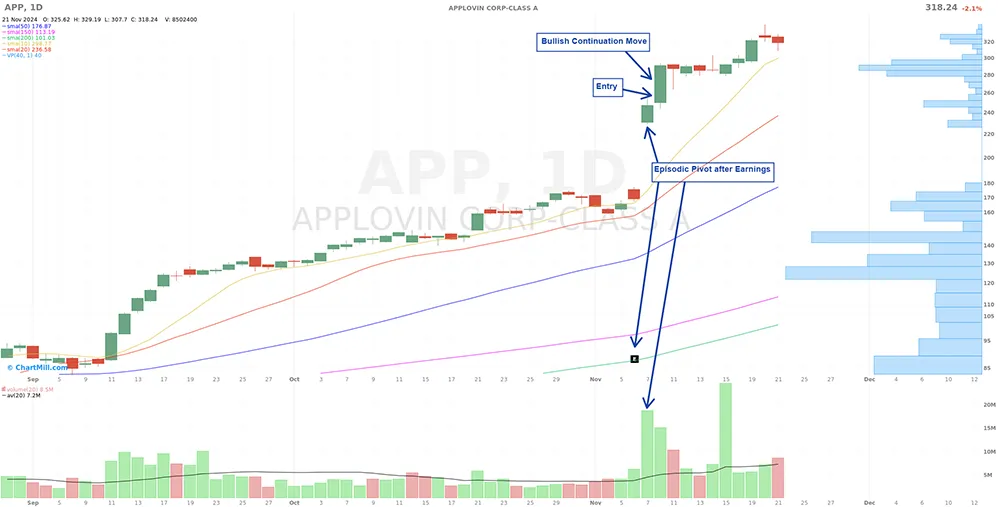
Swing traders can benefit by:
- Holding Overnight or Longer: Capture additional gains as the stock continues its momentum.
- Following Trends: Stocks with strong episodic pivots often establish short-term uptrends.
- Using Trail Stops: Protect profits while allowing the trade to run.
How to Decide Between Intraday and Swing Trading
Intraday Focus: If the stock shows hesitation, gaps into resistance, or fails to sustain momentum, it may be better to treat the trade as an intraday opportunity.
Swing Potential: If the stock closes at or near its highs on the breakout day with strong follow-through volume, consider holding for a swing trade. This flexibility allows traders to adapt to the market's behavior while maximizing the potential of each setup.
Overcoming the Psychological Challenge of High Initial Gains
One potential disadvantage of the episodic pivot setup is that it identifies stocks that have already risen significantly - often more than 10% - in reaction to recent earnings results.
For many traders, this can be mentally difficult, as buying into such a strong move may feel like “chasing” the price.
Why This Happens
The hesitation often stems from a fear of buying near the top or the perception that the stock is overbought. While this is a natural reaction, it’s important to understand that the episodic pivot setup is based on sustained momentum driven by strong catalysts.
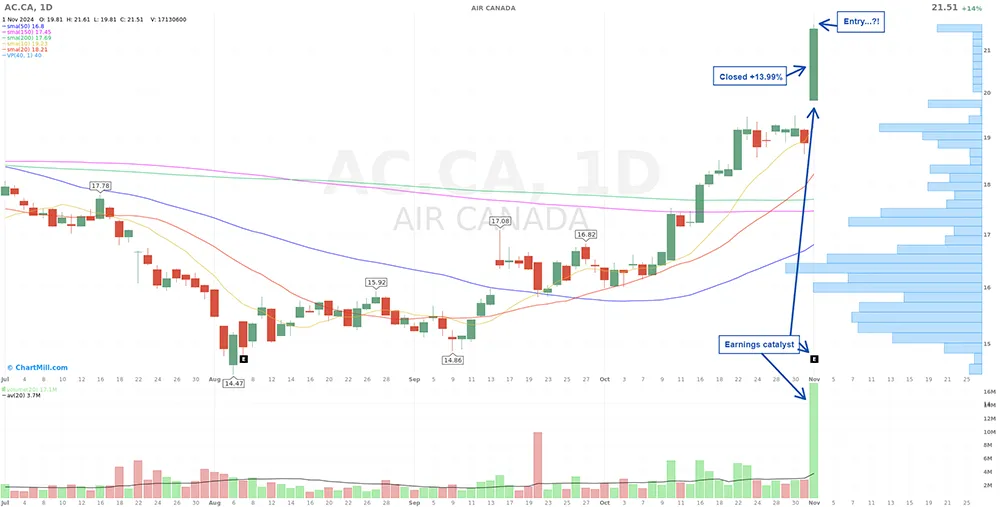
These moves are not random, they are fueled by significant institutional buying that often continues beyond the initial reaction.
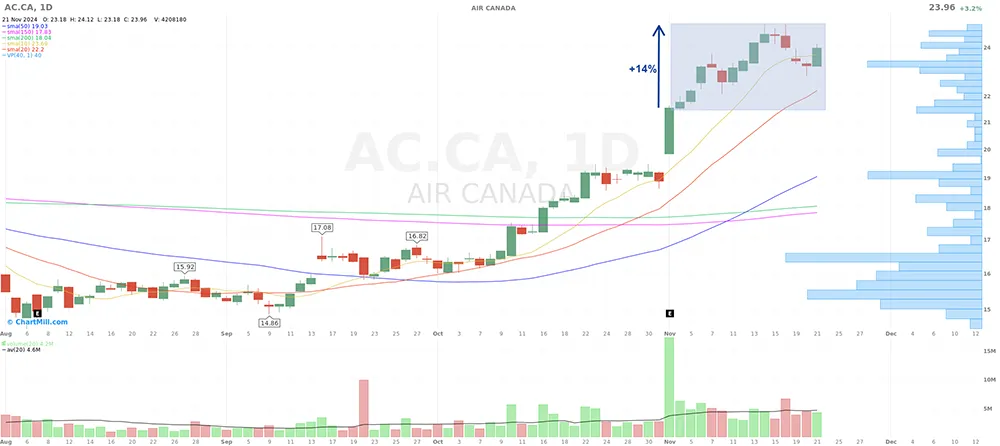
Final Thoughts on the Episodic Pivot Setup
The episodic pivot is a powerful trading setup that leverages significant catalysts, like earnings surprises, to identify stocks with strong momentum and substantial institutional interest.
While the strict screening criteria may generate only a few candidates, the quality of these setups often outweighs the quantity.
That said, the setup does present challenges, particularly the psychological hurdle of buying into stocks that have already risen sharply. Overcoming this requires a mindset shift.
Instead of adhering to the traditional “buy low, sell high” approach, focus on capitalizing on momentum and institutional participation. These episodic moves often have legs, and the initial surge is just the beginning of a broader opportunity.
Whether you’re an intraday trader looking to seize immediate gains or a swing trader aiming to capture follow-through moves, the episodic pivot setup offers versatility and potential for consistent success.
By understanding the dynamics of this strategy and applying disciplined risk management, you can make it an integral part of your trading arsenal.

